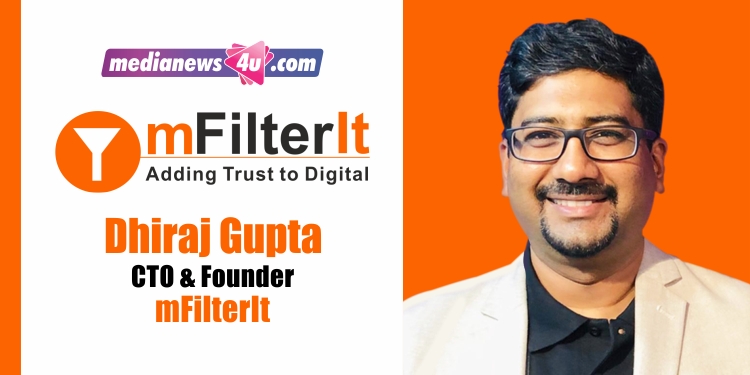Medianews4U caught up with Dhiraj Gupta, CTO & Founder, mFilterIt, on the sidelines of MMA’s Impact India conference in Mumbai on 19th May 2022.
Why was MFilterit launched and what made you to specifically look into digital ad frauds?
Coming from a telecommunication background it was a very different experience and industry to move into. Our understanding in this field was very low, but one thing that really surprised us was that in 2014 the digital industry worked a lot on trust and there was no measurement on actual data. Publishers would say that this is the amount of traffic on a particular site and people would take it at face value. This was very surprising to us as we came from the telecom world where every rupee/paisa and balances were tracked and logged. In the telecom industry the tech enabled us to do the reconciliation process; we used the same tech and the reconciliation process started but the data did not make sense to us. The more we got into it the more weird it became; that’s when we realised that it is not a reconciliation problem but an issue of fraud.
That’s how our journey started off. I clearly remember in 2015 we rolled out the product and talked about ‘Fraud and Performance Marketing’. Digital players were surprised and told us, ‘We are getting performance and verifications, how can I go wrong?’ We had to educate a lot of them that the data they had did not make sense. Advertisers were not looking at data they were looking at summary aggregated insights and nothing below that. This is our journey and I am happy we did this because this is a space which was in critical need and the problems have gone worse since we started. Which means that there needs to be more action to resolve this problem.
Are brands and advertisers now diligent about ad fraud?
Now we are seeing a lot of shift and advertisers are not surprised at frauds. There is a lot of awareness, understanding that fraud exists and now the only question is are they ready to take the plunge and do something about it or lethargic about taking corrective steps.
That change has come around and that is great. It means ‘Well begun is half done’; we have accepted that there is a problem and action needs to be taken. A lot of marketing dollars are now moving towards performance. Advertisers are being asked to prove every dollar that is being spent. This means that if you have fraud and are wasting money your performance will suffer and for marketing managers to justify the dollars spent is going to be a problem. That is why taking action against ad frauds will help them in the long run.
Is ad frauds also due to lack of measurement?
There are standards and measurements for digital marketing but they are not always aligned, but some standards are in place. For example, impression tracking is structured, standardised and viewability is set by MRC (Media Rating Council) & IAB (Interactive Advertising Bureau). But a lot of campaigns are not impression-based, they are click-based, views-based and install-based and standards have not got into that space yet. That probably is the problem area for sure because if there are no standards then it is a wild area for anyone to interpret whatever they want to interpret. In a nutshell there are standards and guidelines but they have not kept pace with how digital advertising has transformed.
How do you eliminate bots? The Twitter-Musk controversy has put it in the spotlight…
It is not just a Twitter problem. It has become a Twitter problem because of Elon Musk, but bots don’t have a special preference for Twitter, they are all over and it’s a problem which is platform agnostic. The size of the problem is definitely more than what Twitter claims (less than 5pc). The numbers which are being thrown around are north of 20pc.
There is no advertising which is being wasted due to this. We are able to look at those data, patterns, flag off the impressions, visits and block sources of that traffic so that bad actors don’t get paid for that activity. When you kill the money source you actually kill the incentive for bots to emerge and that is what we are targeting.

















